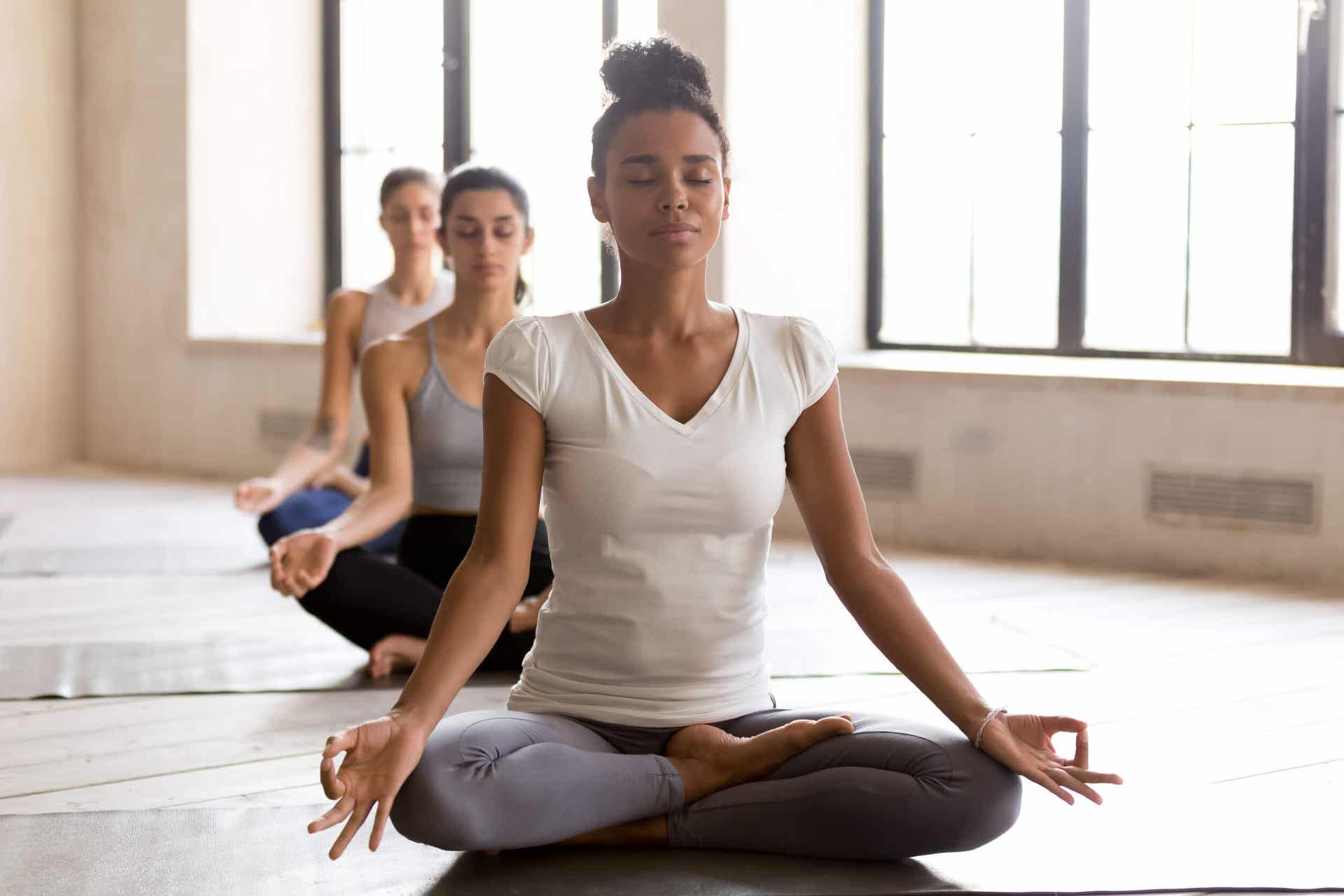What is Yoga? Everything You Need to Know About This Discipline


Reviewed and approved by Doctor Carlos Fabián Avila
What is yoga? Yoga is becoming increasingly popular among people looking for a way to take care of themselves, both inside and out. Yoga is a traditional method of balancing body, mind, and spirit. However, there are some things we should know before we start practicing this discipline.
Discover what yoga is, its origins, and the benefits it can bring us in this article. In addition, we’re going to explain why yoga has become a lifestyle for many people today.
What is yoga?
The word yoga comes from Sanskrit, and its meaning is union. It is a union that refers to the individual and the divinity, without the need for intermediaries. The antiquity of this discipline is not known for certain, but it is very probable that it is more than 5,000 years old.
In each country, the way of practicing it and its different modalities has evolved. However, its propagation was accepted by the Hindu leaders on one condition only: Yoga, outside of India, was not about spiritual or religious content. Rather, it’s typically based on the most basic concepts of relaxation, breathing, meditation, and physical postures.
Types of yoga
Over time, yoga has derived and expanded the different ways of understanding and practicing it. Each one has focused on one of the different aspects that characterize this discipline and has even been combined with other activities.
Depending on the modality, we can find more active or relaxing varieties, some that require great flexibility or even acrobatics, or others that focus on breathing, meditation, and pre-sleep states. The important thing is to be clear about the goal we want to achieve when deciding which modality we are interested in.
We think you may be interested in reading this, too: Koshas or Sheaths of Being: What They Mean in Yoga and Philosophy
The health benefits of yoga
The following are the main health benefits of yoga:
- It improves nervous disorders such as stress, anxiety, or insomnia.
- Yoga prevents weight gain and obesity
- It tones the musculature.
- It improves joint health.
- It prevents diabetes and insulin resistance.
- Yoga reduces high blood pressure.
- It minimizes the risk of suffering coronary and pulmonary diseases.
- It promotes good posture and combats back problems.
- Yoga activates the metabolism.
- It develops companionship and social relationships.

Who can practice it
Since the benefits of yoga are so notorious, it’s highly recommended to practice it at any age. Perhaps in children, however, it’s preferable to adapt it as a game in which they should be in silence and accompanying us. And so, little by little, as passive spectators, they can observe and become impregnated with the calm and stillness that yoga practices offer.
Middle-aged people can use it to slow down the frenetic pace of an intense work day.
It’s also important to mention that the practice of yoga in old age can help to solve physical problems. In addition, it is a perfect group activity to develop social interaction and prevent the feeling of loneliness.

Like this article? You may also like to read: Breathing and Attention: The Keys to a Good Yoga Pose
What is yoga? Yoga is a lifestyle
The origins of yoga have almost nothing to do with the use and adaptation that has been made today of this art. In reality, it was created as a spiritual system for the discovery of the divinity within oneself – that is, it’s very sacred. However, today it has tried to retain a certain sense of introspection and inner search.
In fact, yoga can become a way of life and a way of understanding individuality and its close connection with the universe. In this sense, the highest is known through the smallest. All attention must be placed within oneself to discover the true reality of one’s own existence in the silence.
In this sense, we can also understand yoga as a search for happiness. This discipline invites us to divest ourselves of everything unnecessary, from the accumulation of material objects to thoughts or ways of acting that aren’t healthy.
Yoga proposes harmony and respect in the concept of the individual with everything that surrounds him or her. It’s about discovering and loving one’s own consciousness.
All cited sources were thoroughly reviewed by our team to ensure their quality, reliability, currency, and validity. The bibliography of this article was considered reliable and of academic or scientific accuracy.
- Tekur, P., Nagarathna, R., Chametcha, S., Hankey, A., & Nagendra, H. R. (2012). A comprehensive yoga programs improves pain, anxiety and depression in chronic low back pain patients more than exercise: An RCT. Complementary Therapies in Medicine. https://doi.org/10.1016/j.ctim.2011.12.009
- Rocha, K. K. F., Ribeiro, A. M., Rocha, K. C. F., Sousa, M. B. C., Albuquerque, F. S., Ribeiro, S., & Silva, R. H. (2012). Improvement in physiological and psychological parameters after 6months of yoga practice. Consciousness and Cognition. https://doi.org/10.1016/j.concog.2012.01.014
- Garfinkel, M., & Schumacher, H. R. (2000). Yoga. Rheumatic Disease Clinics of North America. https://doi.org/10.1016/S0889-857X(05)70126-5
This text is provided for informational purposes only and does not replace consultation with a professional. If in doubt, consult your specialist.








